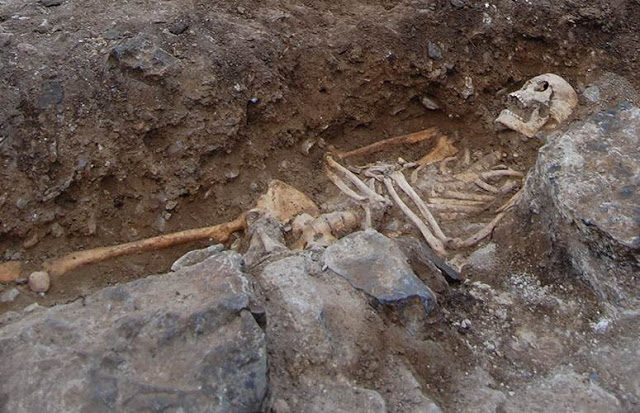Did the climate change and resulting diseases influence human genetics? In today's European population, the mitochondrial DNA lineage that is transmitted matrilinearly is more frequently of the H haplogroup. Why is that?
The Human Evolutionary Biology Group of the UPV/EHU's Faculty of Science and Technology has found items at the medieval site of San Miguel de Ereñozar that could explain this. 163 individuals were laid to rest in this burial ground in the Busturialdea-Urdaibai district of the province of Bizkaia dating between the 13th and 16th centuries, and 73% of them belong to the H haplogroup, a frequency that exceeds what is currently found in Europe.
"It had already been postulated in the literature that some mitochondrial lineages could be linked to various types of diseases, and what is more, could display a differential behavior with respect to the development of the diseases themselves," explained Imanol Martín, who conducted the research as part of his thesis. So the J and T haplogroups would protect against the development of osteoarthritis, while the H haplogroup would increase the risk of developing rheumatic diseases.
So the UPV/EHU researchers looked for traces of rheumatism in the skeletons of the 163 individuals buried at Ereñozar, and found them in 47 of them. And given that time has to elapse before rheumatic diseases leave traces in the bone, they selected the remains of another 43 adults in the burial ground over the age of 45 as a control group and analyzed the mitochondrial lineages. "Haplogroup H was more frequent among the individuals with rheumatic manifestations than in the control group, and likewise, this mitochondrial haplogroup was the most frequent among the individuals affected by spondyloarthritis (group of inflammatory rheumatic diseases of the joints)," added Martín.
In a nutshell, the study confirms the link between rheumatic diseases and the haplogroup H and also provides clues to the high prevalence of this haplogroup in the European population: "In that period of food shortages, the haplogroup H individuals had a selective advantage over those with other haplogroups, because H is more efficient when obtaining energy from the diet." However, that highly efficient metabolism also generates so-called reactive oxygen species (free radicals, oxygen ions, etc.) unleashing cell dysfunction and apoptosis, which, in the long term, leads to the degradation of cartilage and the development of diseases of a rheumatic type. Survival always comes at a price.
The findings are published in Scientific Reports.




Comment: See also: